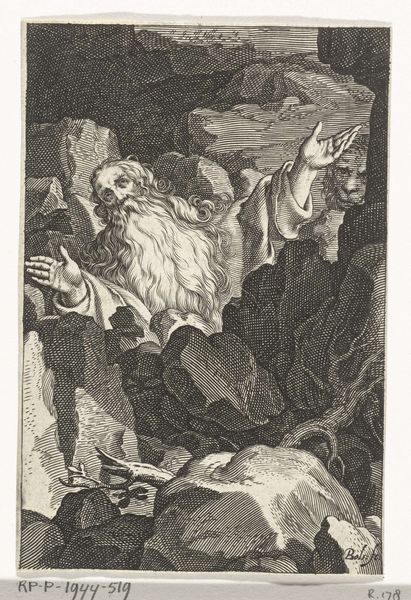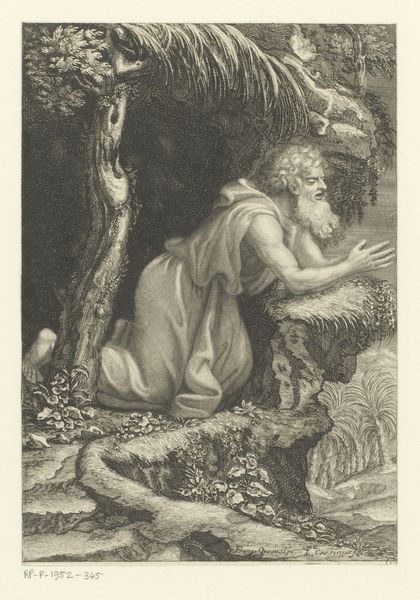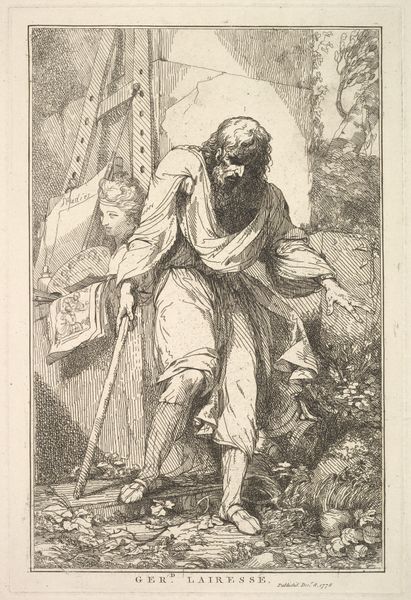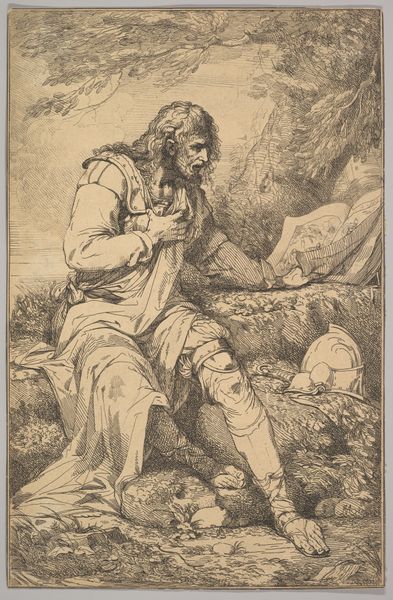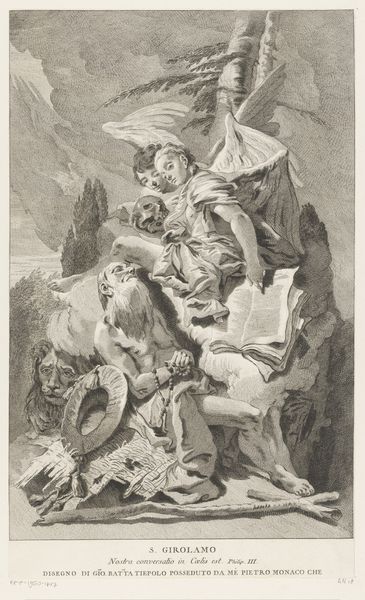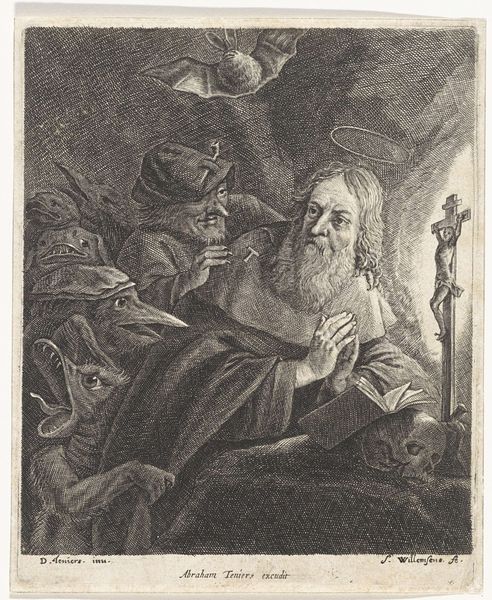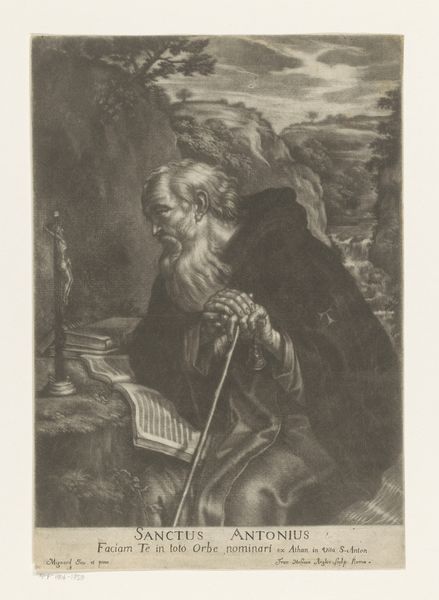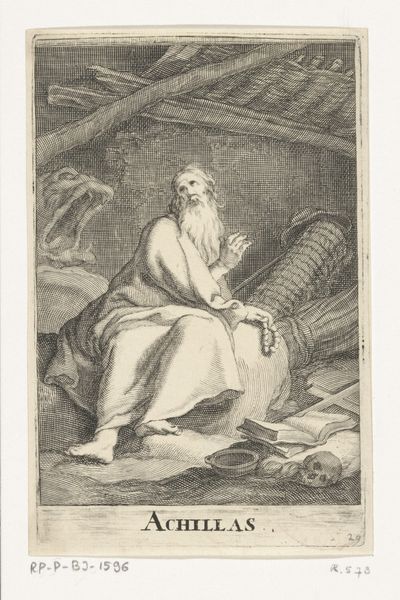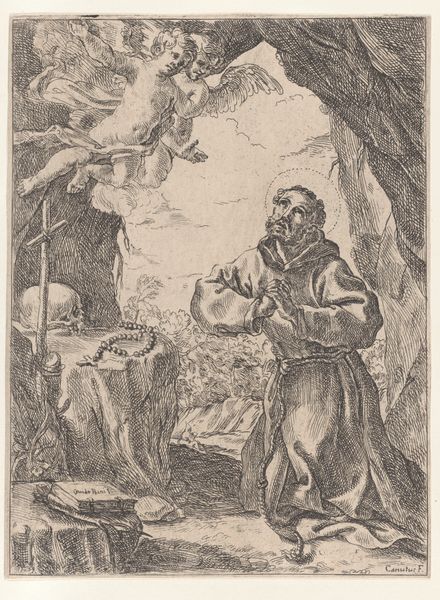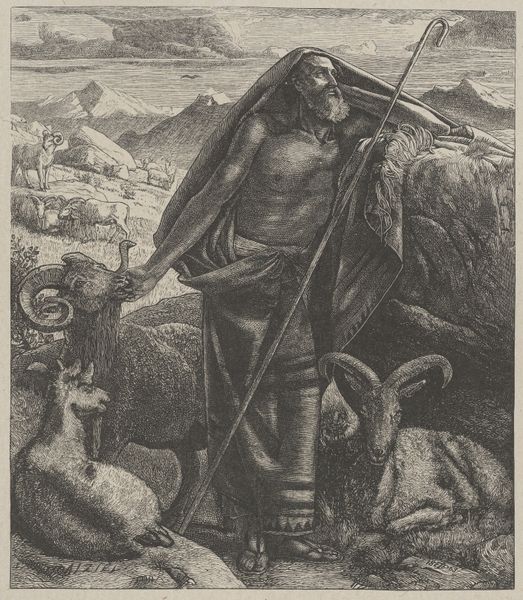
print, engraving
#
portrait
#
baroque
# print
#
old engraving style
#
history-painting
#
engraving
Dimensions: height 449 mm, width 275 mm
Copyright: Rijks Museum: Open Domain
Curator: My first impression is... ascetic. Stark, almost. Like he's communing with the barren landscape and finding something profound there. Editor: Indeed! Here we have "Saint Hilarion, Abbot," an engraving crafted by Pietro Monaco sometime between 1717 and 1763. It’s currently part of the Rijksmuseum collection. The engraver based his piece on a design by Giovanni Battista Tiepolo. Curator: The skull really drives home the fleeting nature of earthly existence, doesn't it? It's a classic memento mori, urging us to reflect on our own mortality. Editor: Absolutely. Saint Hilarion lived as a hermit in the desert near Gaza. His life story emphasized austerity and spiritual devotion, a journey of self-denial to connect to a higher power. That hat hung on the wall reminds me of outcasts or exiled people, wandering to isolate themselves from society. Curator: The rendering is beautiful; it almost feels as if he is emerging from the very rock he's sitting on. Notice how the lines, though etched, give a soft, almost luminous quality to his beard and robes. It’s all shades of gray, and you can get a good sense of a man escaping from earthly pleasures to enter into religion. Editor: The contrast between the meticulously detailed figure of Hilarion and the sketchier background creates a really compelling visual tension. He's anchored to the foreground, a man with one foot in the spiritual and the other in the temporal. Curator: Exactly. The choice to depict him writing, perhaps meditating on scripture, emphasizes the intellectual component of his spiritual quest. He’s seeking answers through devotion, knowledge, and personal discipline. Editor: The skull, the quill, even that worn-looking hat in the background—everything in the scene is imbued with symbolism related to death, isolation, study, and the divine. What an introspective piece! It prompts us to think about where we seek solace and understanding. Curator: It is! It's been a joy to examine those timeless ideas, haven't it? Editor: Definitely a spiritual shot in the arm, so to speak!
Comments
No comments
Be the first to comment and join the conversation on the ultimate creative platform.
